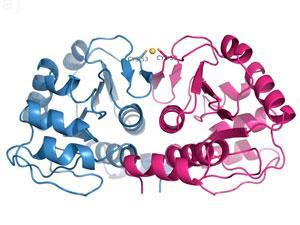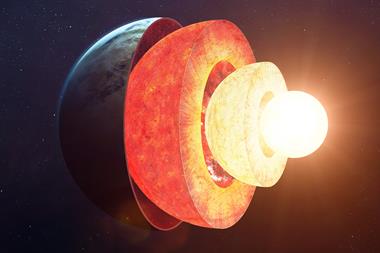
It’s recently been suggested that DJ-1 protects against oxidative stress by supplying a copper ion to a metalloenzyme (SOD1) that destroys free superoxide radicals in the body. But how DJ-1 could do this was previously unknown. Odell’s team used X-ray crystallography to look at the structure of the protein bound to copper.
As the backbone structure shows, the copper ion is bound between two cysteine residues – one in each subunit of the DJ-1 homodimer. If just one of these residues is compromised by a Parkinson’s induced mutation, Copper can no longer be sequestered by the protein. That means that copper remains in the cell and SOD1 is unable counter oxidative stress.






No comments yet